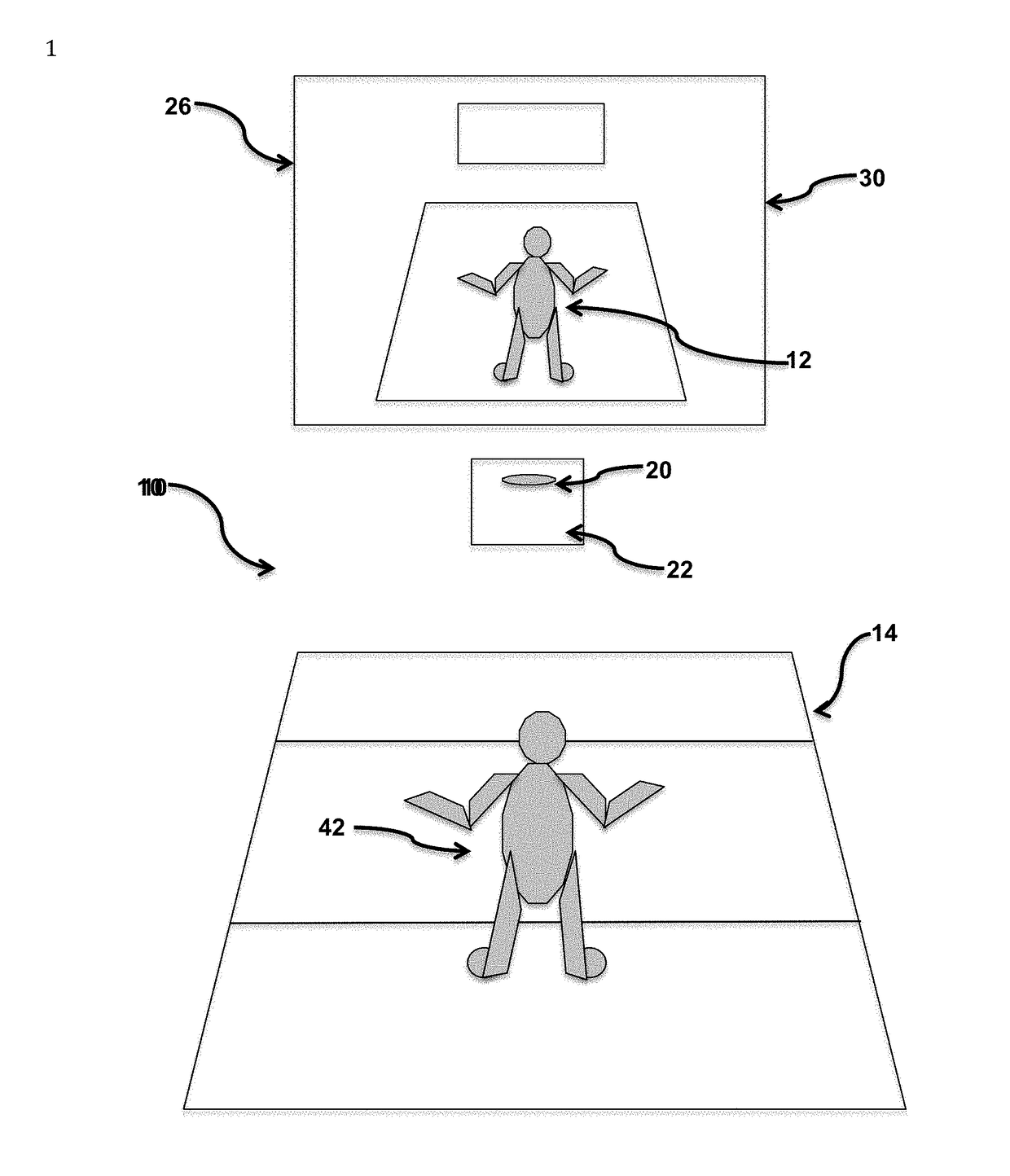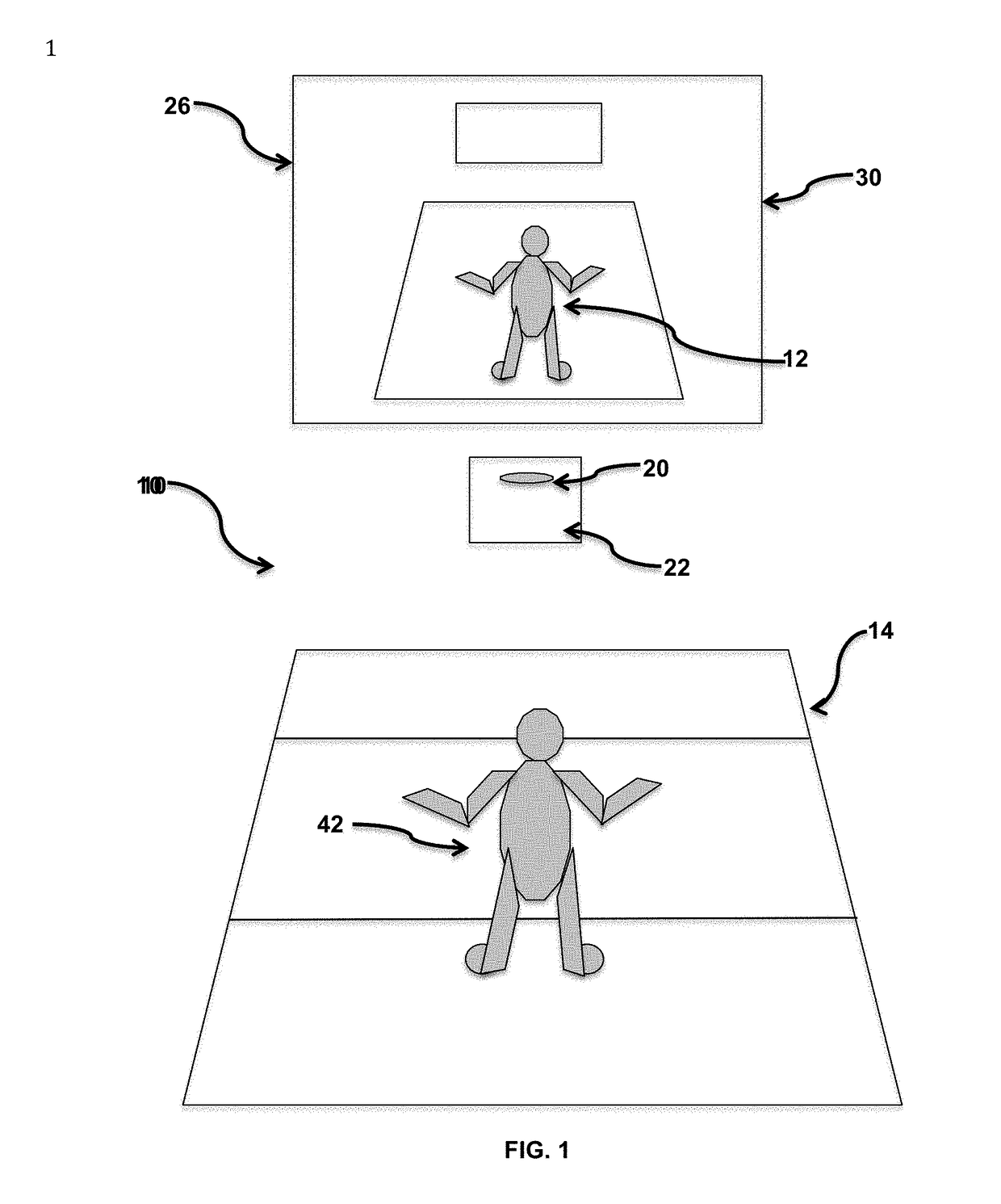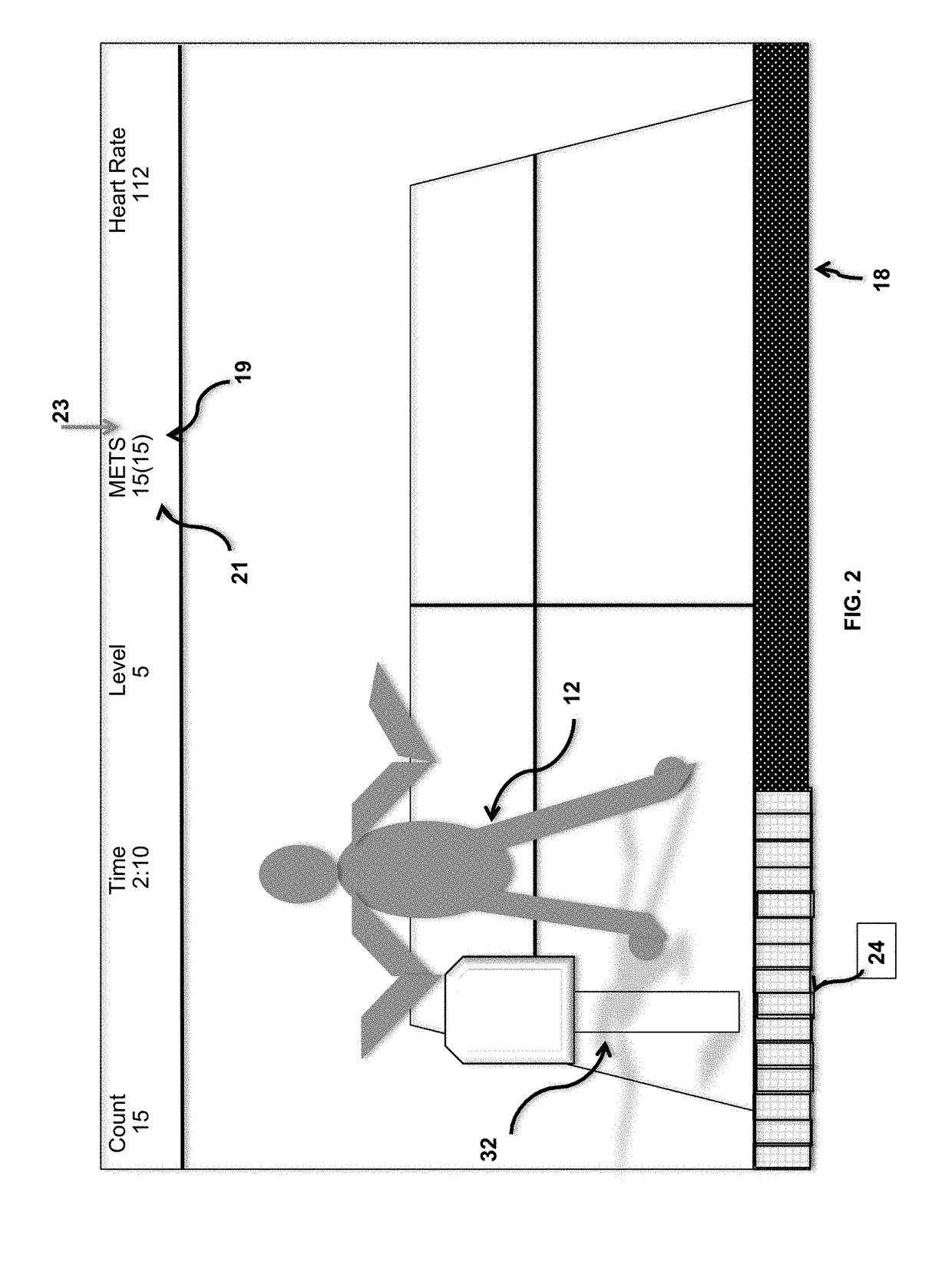Simulation creates a novel Dual Task Paradigm ("Divided Attention") with enhanced fidelity with dynamic environments for injury reduction, performance enhancement, and rehabilitation
- Summary
- Abstract
- Description
- Claims
- Application Information
AI Technical Summary
Benefits of technology
Problems solved by technology
Method used
Image
Examples
1st embodiment
[0061]By way of example, a football running back carrying the ball will continuously select a movement path, based on his visual observation, that offers the best opportunity to gain maximum yardage. At times, the player may also modulate his forward speed to elude tacklers or “wait” for his blockers to “clear” his path. The same paradigm may apply to a basketball player driving to the basket to score. Or the senior citizen avoiding her cat as she moves from the sink to the table.
[0062]Initially it was the intended purpose of the Graded Test taught in '619 was to replicate the uniform, predictable progression of exercise intensity employed with treadmill cardiac stress tests. It was unexpectedly discovered that this graded test also enabled a novel and remarkably efficacious Dual Task Paradigm (Divided Task). One that more precisely replicates real world challenges / tasks than known DT paradigm methodologies. It also generates previously unavailable data / analytics with clear benefits...
2nd embodiment
[0122]In contrast to the first embodiment, this second embodiment provides visual cues that prompt movement rates that may appear to the subject to either be unpredictable or predictable in duration as well as magnitude of the speed prompted.
[0123]This appearance of randomness acts to further challenge the subject's cognitive prowess (reserves) as well as placing additive stress on the subject's movement capabilities.
[0124]Another variation of this novel DT paradigm that, in addition to prompting a predictable progression of the subject's movement rate, may also prompt movement rates of varying speeds that may appear unpredictable to the subject. In other words, the subject may be prompted to move faster or slower as the protocol progresses and in a manner that appears to the subject to be unpredictable.
[0125]This second embodiment of the present invention acts to progress the subject's movement rate in what appears to be unpredictable fashion. The subject may be challenged via bout...
PUM
 Login to View More
Login to View More Abstract
Description
Claims
Application Information
 Login to View More
Login to View More - R&D
- Intellectual Property
- Life Sciences
- Materials
- Tech Scout
- Unparalleled Data Quality
- Higher Quality Content
- 60% Fewer Hallucinations
Browse by: Latest US Patents, China's latest patents, Technical Efficacy Thesaurus, Application Domain, Technology Topic, Popular Technical Reports.
© 2025 PatSnap. All rights reserved.Legal|Privacy policy|Modern Slavery Act Transparency Statement|Sitemap|About US| Contact US: help@patsnap.com



